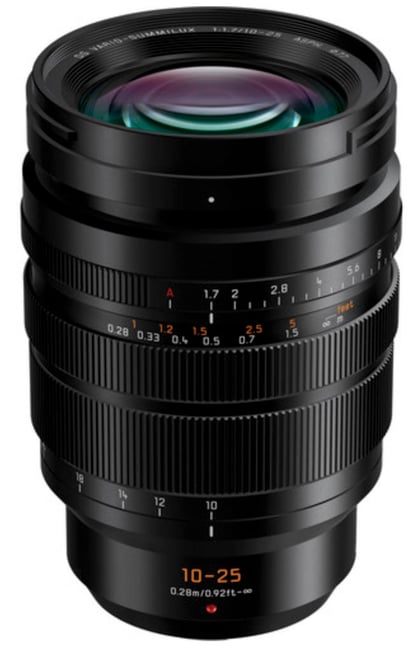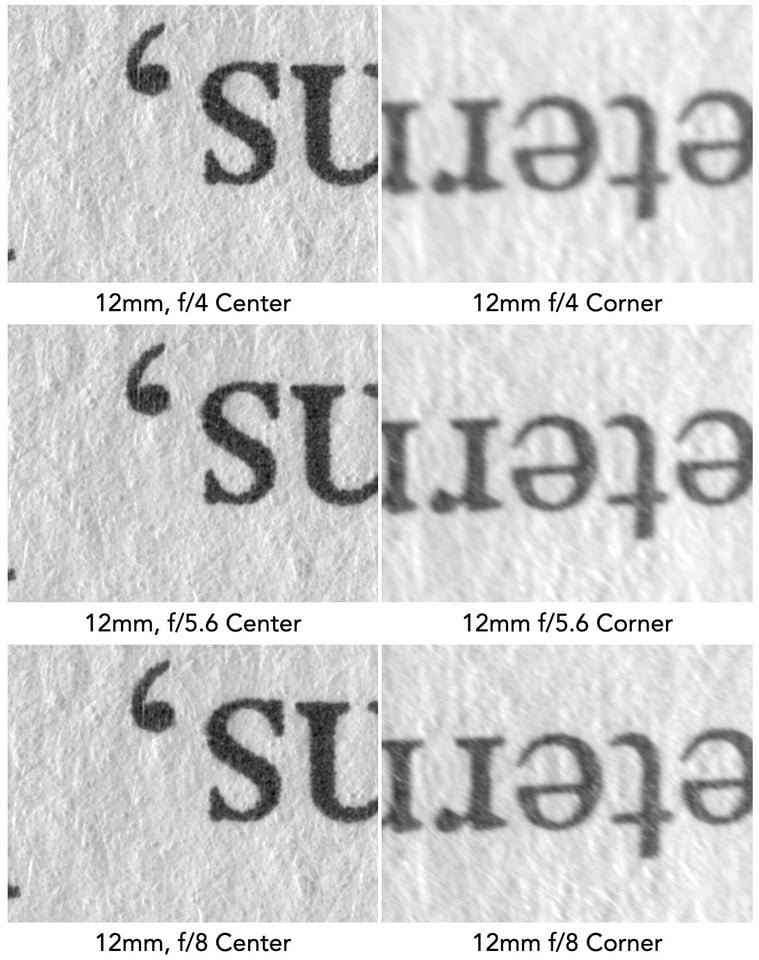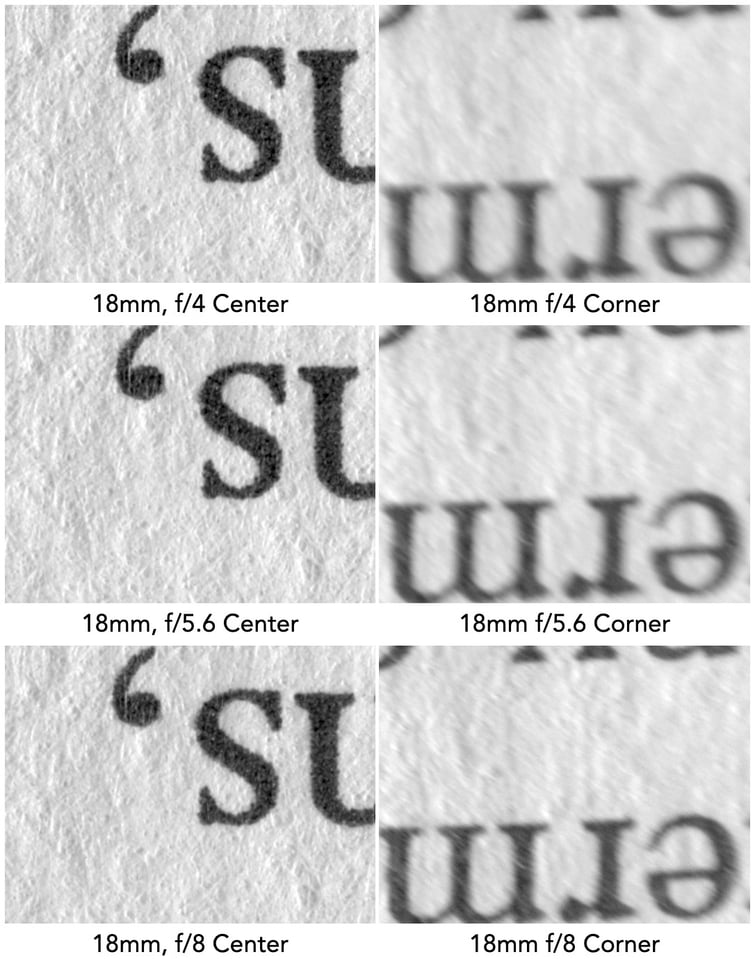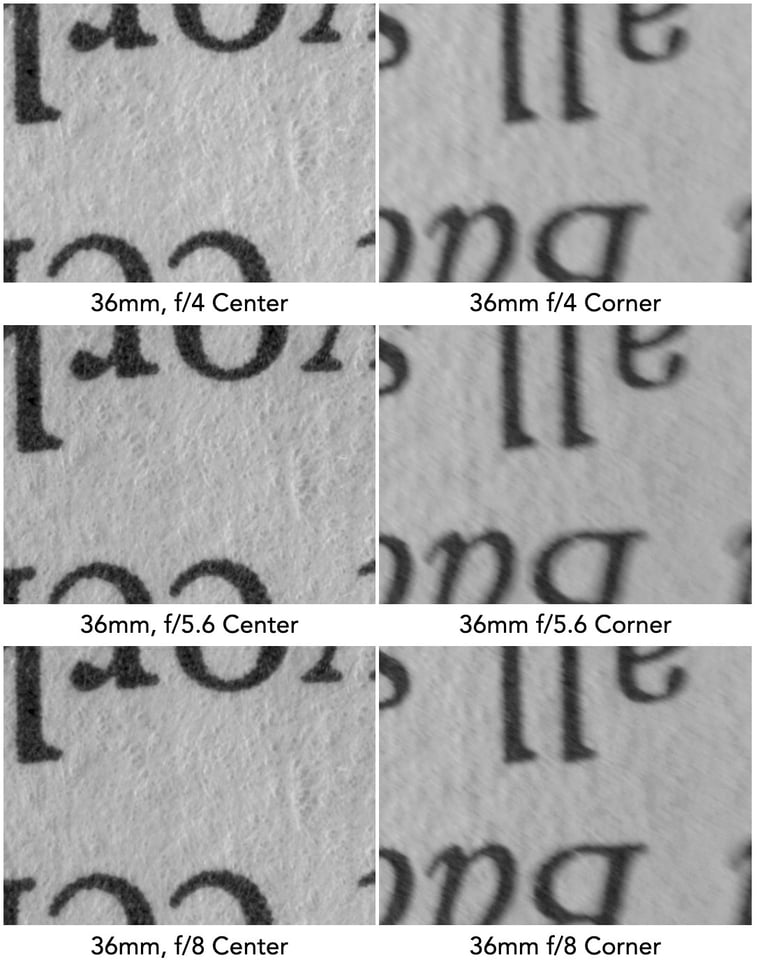When you search for a high-quality lens for Micro Four Thirds, it’s hard to avoid the PRO series from Olympus (now OM System). And in terms of a standard, midrange zoom, one of the best lenses is the Olympus M.Zuiko Digital ED 12-45mm f/4 PRO. Unlike f/2.8 lenses, the Olympus 12-45mm f/4 fits its useful range of focal lengths (24-90mm full-frame equivalent) into a very light, 254 gram (0.56 pound) package.
If you shoot Micro Four Thirds, is this lens right for you? Read on to find out!

Table of Contents
Build Quality
The Olympus 12-45mm f/4 PRO is a well-built lens with a metal mount. The focus ring turns smoothly, and it feels like a solid hunk of glass. It is also weather-sealed, so when combined with a weather-sealed camera like the Panasonic G9 or the Olympus OM-1, you can be a pretty confident that it won’t be damaged by the elements.

The external zoom mechanism is less smooth than I would have liked, especially for a lens that costs $699. It makes a bit of a sound when extended, and I feel like it’s a little less smooth than some lenses that cost half as much. External zoom lenses in general are not my preference, although it’s hard to avoid them in this range of focal lengths.

Autofocus
The autofocus of this lens is decent, but not instantaneous. I did however test this lens on a Panasonic G9, which has only depth-from-defocus (DFD) rather than phase-detect autofocus (PDAF), so I may not have truly experienced what this lens can do. In any case, I have other Micro Four Thirds lenses that focus a bit faster.

The f/4 aperture of this lens allows it to focus in fairly dark conditions, but it’s not on the level of f/2.8 glass. There have been times, especially when taking after-sunset landscapes, when I have focused it manually because I felt the autofocus system struggle a little.
The autofocus is quiet, though. According to its product page, it is described as having a “Movie & Still Compatible (MSC) autofocus system [that] benefits both photo and video applications due to its smooth, quiet, and fast performance.”
I think this statement is mostly correct, except that its autofocus motor does make a very quiet pulsing sound, which is definitely louder than the “plastic fantastic” Olympus 40-150mm f/4-5.6 R. This sound can be picked up by a camera’s microphone or an on-camera shotgun mic. Arguably, these are not the best audio solutions in any case, but it’s something to keep in mind.
As with most mirrorless lenses and cameras, I have had no problem with AF accuracy except when the camera failed to focus due to insufficient light.
Sharpness and Close Focus
This lens is sharp, albeit with some caveats. The center sharpness is excellent, and the edge sharpness is, for the most part, good. For landscapes, I really cannot complain.

But the difference between the center and the corners of this lens becomes much more apparent when focusing closely on flat subjects.
Moreover, because this lens has a very nice 0.25x maximum magnification, you can indeed get very close using this lens. This is useful for wide-angle wildlife photography like the kind done by Nicholas, my fellow writer at Photography Life.
Let’s take a look at some tests of close-focus performance. Check out my first test at 14mm:
You can see that the center is sharp wide open, but the corner suffers significantly, and this is replicated along a significant part of the edge as well. Stopping down helps, but not that much. A similar story occurs at 18mm:
Again, there is excellent center sharpness, but relatively weak corner and edge sharpness. I will show you one more test at 36mm, but suffice to say, this lens performs similarly at all focal lengths:
This problem is exacerbated by field curvature. I noticed immediately that when the lens is focused perfectly on the corners, the center was out of focus. This effect is obviously more noticeable with such a flat subject close to the lens.
Is this a problem? It depends on what you shoot. For close-up photography, you’ll have a hard time getting sharp corners. Certainly for something like photographing flat artwork, it would be a bad choice. But the corner sharpness improves dramatically as you focus further away, so this lens remains an excellent choice for landscape photography.

Distortion and Other Optical Features
At wider focal lengths, this lens has Distortion with a capital D. At 12mm, you can see an immense amount of barrel distortion:

This distortion continues into the longer focal lengths but is not as severe, and in any case, it is easily corrected if your post-processing software has a lens profile. There is also some vignetting that doesn’t seem particularly severe when uncorrected.
What about flare and sunstars? Here is a worst-case scenario shot where you can see the sun directly in the frame with the lens stopped down to f/14:

You can see that the seven rounded aperture blades do indeed produce a decent and defined 14-point sunstar. Here are some other examples of sunstars to show the typical sunstar performance:
You can also see the worst-case scenario here with regard to flare approximately parallel to the 11-o’clock position of the sunstar. Most of the time when the sun is in the frame the flare is a bit less noticeable, and is either nonexistent or easily correctable as with the small blue dot in this image:
The Olympus 12-45mm f/4’s bokeh is decent, but not outstanding. It has seven rounded aperture blades, but not all rounded blades are created equal. Although the bokeh circles are nice and don’t look too wonky, they are never really circular, and retain their heptagonal shape throughout the aperture range. Therefore, although this lens can function as a nice portrait lens, it is not going to make the background look as pleasing as a dedicated portrait prime.

Alternatives for Micro Four Thirds
There are several potential alternatives to the Olympus 12-45mm f/4 PRO for Micro Four Thirds. I’ll go through some of the best options that have most or all of the 12-45mm’s range.
The first is the older Olympus 12-40mm f/2.8 PRO. Although this lens has a similar optical quality, it is heavier at 382 g /0.84 lbs and more expensive at $999 (at least when it’s not on sale). It also does not have quite as long of a focal length on the telephoto end. For most photographers, I would recommend the Olympus 12-45mm f/4. However, if you often shoot indoors or in low light, the f/2.8 aperture will be helpful, and it would be the better choice.

There is also the Olympus 8-25mm f/4 PRO. This one is heavier still at 411 g / 0.9 pounds, but its main advantage is the extra 4mm at the wide end, which is a difference of 22.9 horizontal degrees. That’s absolutely huge for landscapes. On the other hand, the 12-45mm range is much more useful for most occasions such as events, where 25mm is a little short for portraits. In short, the Olympus 8-25mm f/4 is more of a landscape specialist option, but it could make sense if you already have a good telephoto.
The Olympus 12-100mm f/4 PRO is another lens that has even more versatility and surprisingly high sharpness throughout its zoom range. However, it is heavy and almost twice as expensive as the 12-45mm f/4. I would still consider it because it covers such a long zoom range that it could replace a dedicated telephoto in your bag! The target audience is probably travel photography, but landscape photographers should give it a close look too, because landscapes with longer focal lengths can be very compelling.
The final lens I must mention is the Panasonic Leica DG Vario-Summilux 10-25mm f/1.7. Although it is a bit more limited at the long end, it has an amazingly bright aperture of f/1.7, and from all the lab-tests I have seen, this is the sharpest of all the lenses on this list with amazing corner performance. Yes, it is the most expensive and has a more limited zoom range, but it is one of my dream lenses that I would buy if I used this focal range more frequently.

Considering those options, I believe that the Olympus 12-45mm f/4 PRO strikes one of the best balances for Micro Four Thirds shooters today. It’s one of the lighter and less expensive midrange zooms, while still having very good image quality with the one exception of corner sharpness at close focusing distances (not an area that most photographers will care about).
Conclusion
The Olympus 12-45mm f/4 PRO has excellent performance and should be more than enough for almost every application including landscape, portrait, and even wide-angle widlife (assuming the wildlife doesn’t want to eat you). I do wish it was a bit sharper in the corners for close-up shots, but for most of what I want to do with this lens, it’s not a problem.

It is also priced more reasonably than some more impressive lenses, so I would say the Olympus 12-45mm f/4 should be one of the first lenses you consider for Micro Four Thirds if you are looking for a standard zoom. Have you tried this lens? Let me know in the comments what you think about it!
Where to Buy
You can buy the Olympus 12-45mm f/4 PRO lens at B&H Photo. Moreover, by buying this lens through our affiliate link, you help support our efforts to bring you independent and trustworthy gear reviews!
Olympus 12-45mm f/4 PRO
- Optical Performance
- Build Quality
- Value
Photography Life Overall Rating





Why would you do a review of an Olympus Pro lens using a third party camera!!
Surely to get the best results for a legitimate review it would make sense to use an Olympus lens on a Olympus body…
(1) The image quality does not depend on the camera used. It works equally well on a G9 as it does on an Olympus or OM system camera.
(2) The autofocus is very good even on a G9, and better than some Olympus cameras even (like the earlier ones like the EPL-5). The OM-1 would be better, but then again, the AF is not really related to the brand.
(3) The entire point of Micro Four Thirds standard is to have every lens work equally well in all the BASIC ASPECTS of functioning. Yes, it is true that ONE or TWO features might be slightly different, such as IS-sync, for some lenses, or maximum shooting speed. But for this lens, that is irrelevant because it doesn’t even have any IS in the lens. The VR is already SO good on the G9 that for any reasonable application, you don’t need to worry.
Therefore, your conclusion, that an Olympus or OM-system camera would make any difference in the real-world, does not hold.
Yes, but you should consider that any brand has in-camera software for each lens of the brand itself. May that be some defects, like distortion, are corrected by the camera. Unless you want to test the lens without any correction….
Photography Life’s lab tests are done without corrections, and I believe in that strategy as well. I tested the Raw files without any corrections in this review in particular.
That is true for most proprietary makes of camera, however, MFT is not a make of camera, it is a shared interchangeable system.
“The Micro Four Thirds system cameras and lenses perform automatic distortion correction using correction parameters that are stored in each lens’s firmware, and are applied automatically by the camera and raw converter software. The optics of most of these lenses feature substantially more distortion than their counterparts in systems that do not offer such automatic corrections, but the software-corrected final images show noticeably less distortion than competing designs.”
en.m.wikipedia.org/wiki/…n_(optics)
∴ parameters in lens ⇨ camera body ⇨ Exif metadata ⇨ third party raw converter and editing software.
I have bee using the 12-45 f/4 for a couple of years. It is a very versatile and sharp lens. A great all-around tourist lens and also the close focus is useful for me. But recently I acquired the 45mm f/1.2 Pro, and it is just stupid sharp from f/2 on, which the zoom lens can’t touch. For landscapes, the 45mm f/1.2 wins hands down.
About the close focus part; with close focussing the depth of field becomes very shallow, so the edges and corners are never sharp with macro shooting. How can you even expect such a thing, not even worth testing imo ? Also the light is not even across the whole framing too. What’s the use of this ?
Well, it’s really not the thin depth of field. I have a lot of experience with a lot thinner depth of field, and additionally, I used the zoom EVF feature to specifically TRY and get the corners sharp. I lit the chart with a flash as evenly as I could also. I am pretty sure the corners are fairly weak in close-focusing.
Edges and corners never sharp with macro focusing? I also tried my Venus Laowa 50mm f/2.8 and that thing is sharp corner to corner.
Estoy totalmente de acuerdo con Esteban. Es absurdo hacer una valoración de la nitidez que ofrece un objetivo en las esquinas a una distancia tan corta salvo que sea macro (este no lo es).
Well, depth field is a function of image size…any lens will exhibit shallow DOF when you get up close.
This 12 – 45 lens is 2.5 times the size and weight and also 2.5 times the price of the pancake 14 -42mm zoom. Some testers say the image quality is not significantly better to justify the price and purchase.
Given my close-up testing, I would not be totally surprised. The center performance is pretty nice though, and also the stop faster on the long end is very useful given that f/4 for depth of field is already kinda narrow for micro four thirds. I got mine used though, and I’m not sure the new price is worth the corners.
Hi Jason and Stephen – I have been looking at many experiential comments on the performance of the 12 – 45mm f4 lens which have been left at a MFT users group.
The consensus from those owners is that you guys are right – this lens is a better performer than the EZ kits lens.
All the best to you both :)
I have two 14-42mm lens the ED + EZ. I bought the 12-45mm f/4.0 Pro because of its extra length and weight which i find more comfortable to hold and easier to focus. Plus the Pro is weather sealed, constructed of metal and much sturdier. The optical quality is superior to the plastic 14-42mm kit lens. The EZ is prone to spring failure 🌻
Sure, also, it doesn’t make sense using a not weather sealed lens on weather sealed cameras like the Olympus are.
That’s illogical. Plenty of people just never shoot in inclement weather, and so it’s perfectly logical. I use plenty of non weather-sealed lenses and all my bodies are weather sealed.
I prefer the 12-45 rather than 12-40 because I need a lighter lens with pretty good image quality. For me and and many M4/3 users, compaction is more important than image quality.
I’ve gone for the f4 versions of the Pro lenses. Optically excellent and small. Incredible flare control. No visible difference in my test between my 2.8 and 4 lenses. Highly recommended
Interesting. Might it be better to review on an Olympus body that will make the best of its features and setup? I use it most of the time on E-M5 mkIII as my go to lens.
I use it for ebay listings, small, compact, goes to 45mm and focuses nice and close
Jason, thanks for the review. A couple points vs the 12-40 f2.8: the 2.8 supports 50 fps with AF with the OM-1, which the f4 doesn’t. The f2.8 is still lighter than the Nikon f4 you mentioned below. Also, the f2.8 is sharper in the corners than the f4 Oly. Especially if you stop down.
The f4 is definitely a good lens, but the f2.8 is almost underrated at this point because it’s just plain excellent.
Yeah, I think the f/2.8 would be a great option. It’s a bit more expensive but you do get a significant amount more for it.
Hi, Jason, how do you think about Panasonic Leica DG Vario-Elmarit 12-60mm f/2.8-4 ASPH. POWER O.I.S. Lens? Especially optical performance. It is slightly heavier, but has more reach. I need a more competent and bright lens to replace my kit lens for travel and casual shooting. Could you give me any advice on the Oly 12-45 and the Pany 12-60? Thank you !